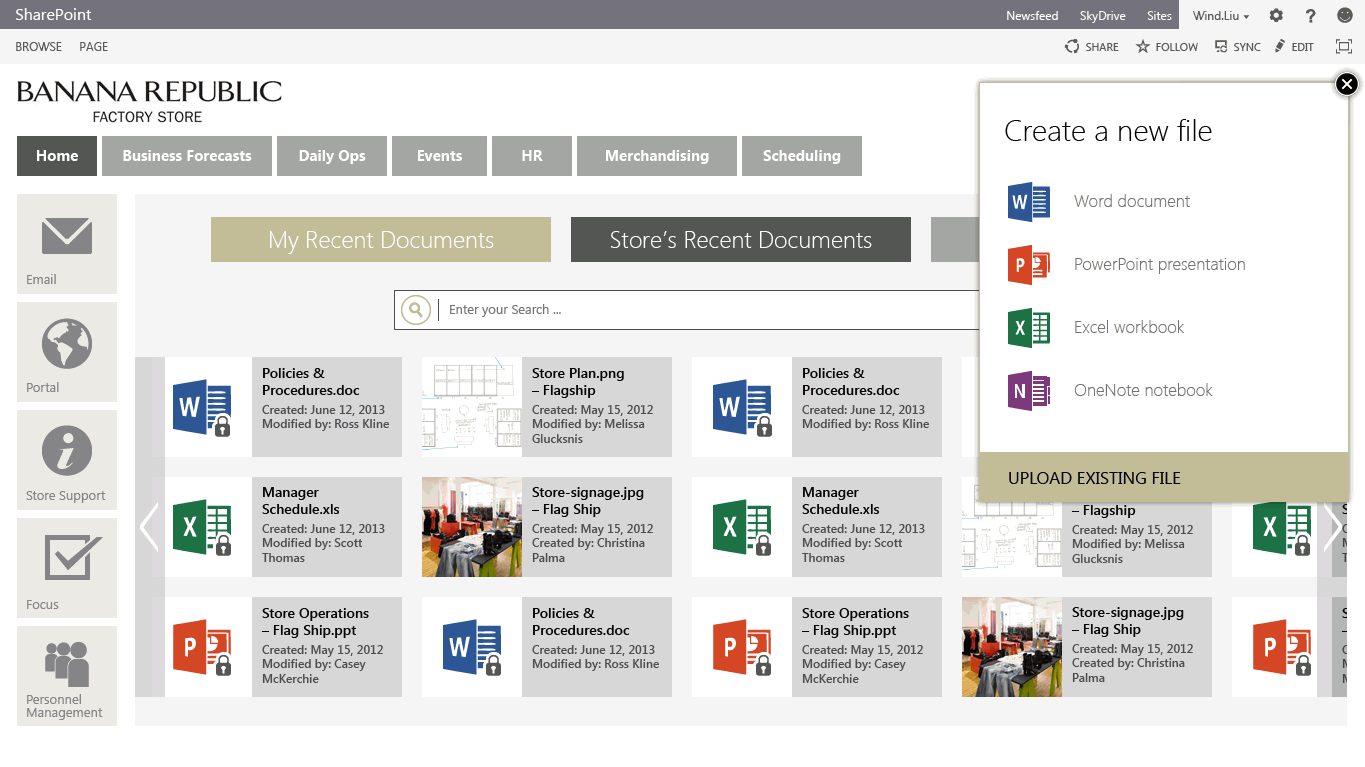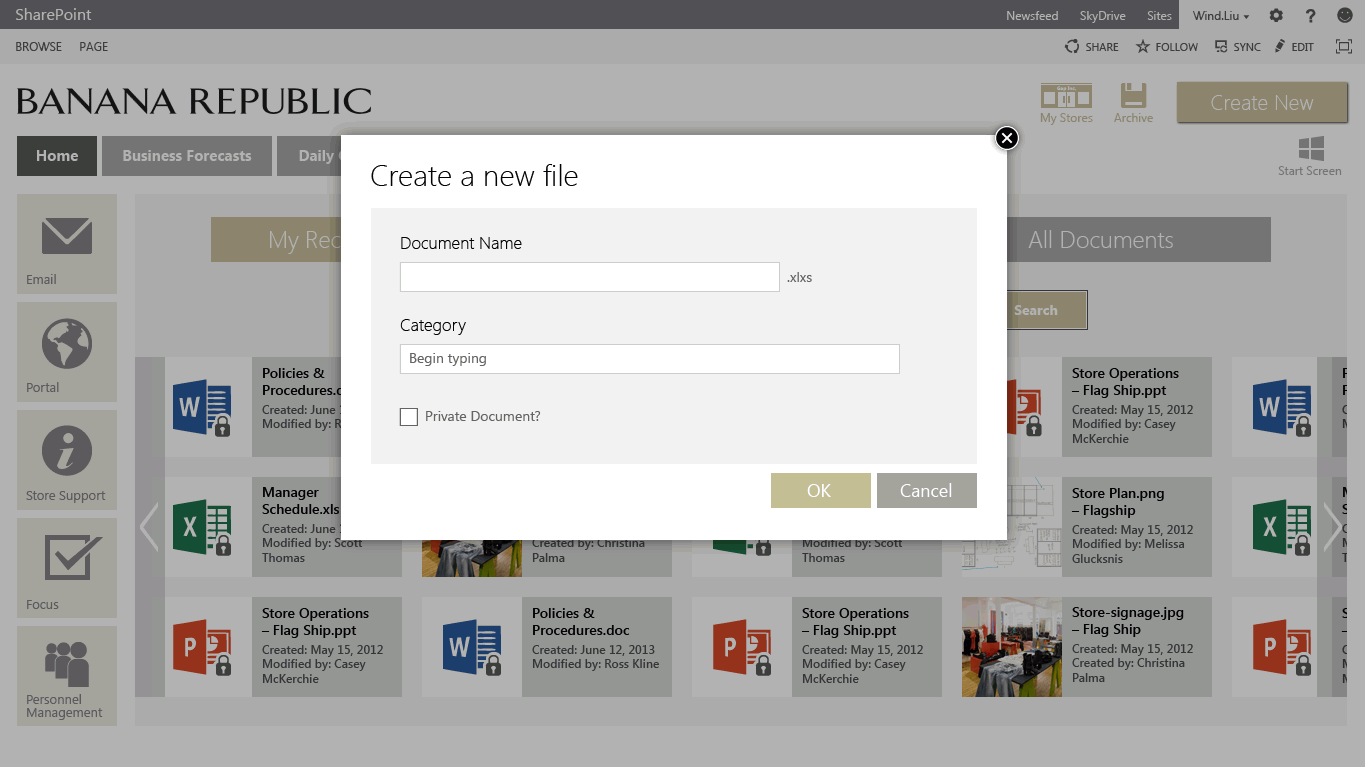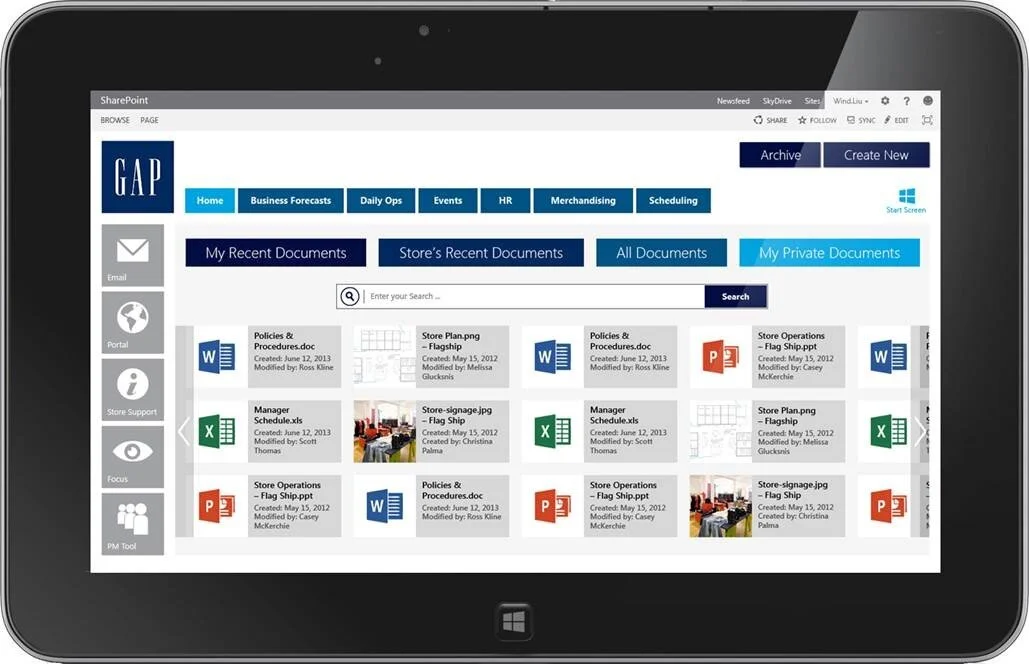GAP Inc.
This product is a multibrand and multilingual Document Management System that supports the day to day work of 3,600 Store Managers globally.
OVERVIEW
Sector Clothing and Accesories Retailer
Project Description Meka led a 12 person team in the design of a multibrand and multilingual Document Management System for Gap Inc. to support the day to day work of 3,600 Store Managers globally.
My Roles UX Design Team Manager, Senior UX Designer, Product Designer, Client Relationship Main Point of contanct for Product and UX. I had the pleasure to move to San Francisco for four months to lead this project.
Business Challenge Store Managers at GAP did not have a proper Document Management System to handle all the documentation needed to run a store. This technological shortcoming was creating a lot of confusion, and miscommunication among store employees, and between stores and corporate. This inevitably affected the efficiency of the overall GAP business. GAP and my team at OSC (Rhipe) set out on a quest to fix the problem.
Design challenge Design an impeccable Document Management System to be used by 3,600 store managers globaly, in four languages and for four different brands.
Result GAP reported a considerable increase in Store Manager satisfaction and time spent on the floor at all the flagship stores globally within one month of adoption. GAP then reported overwhelming sucess of the product globally.
Viewpoints Desktop, tablet.
PROCESS BREAKDOWN
Business Goals and Mission/Vision Workshop
The first workshop I held was the Business workshop, where I re-confirmed business goals and guided the client through the creation of a Mission and Vision for the project. This workshops is usually attended by stakeholders.
Results of my Needs Gathering Workshop
Learning looking back, I would have liked to have had Store Managers in this workshop. To this day, I am constantly developing new and appropriate ways to communicate, so that stakeholders understand how important it is to involve ends users early on.
Needs Gathering Workshops and Interviews
I conducted five Needs Gathering workshops with stakeholders and regional managers.
I also incorporated twelve in-person interviews with Store Managers at each flagship store: GAP, Banana Republic, Athleta, Old Navy. This excercise proved to be of great value as I got to see exactly what store managers had to deal with by not having a proper Content Management System to conduct business.
Learning Whenever possible and appropriate, observe users interacting with technology/systems in their day to day. This approach yields great results as it is easier for users to explain an issue when they can simply show how they struggle to accomplish a task.
Needs Categories
Sample findings
Store managers kept all documents in files saved to the store’s computer. They were also spending too much time attaching documents to emails, and sending new emails when the documents were updated.
Since there was only one computer (maybe two) per store, store employees wasted time waiting “in line” to be able to use the computer to handle important store tasks such as scheduling.
Furthermore, store managers were spending too much time in the back room of their stores instead of on the floor excecuting their role as a manager, and helping customers.
Introducing the Tablet the result of my workshops led me to conclude Store Managers needed a way to be able to work on the floor, and at the same time access documents, and manage the administrative workflow of a store. That is why my team and I suggested the introduction of a tablet to completely support the day to day work of Store Managers globally.
I presented at stakeholder meetings to pitch our idea, and after some meetings, GAP decided to go for it. We were now designing for desktop and tablet.
Wireframes and Graphic Design
Wireframes
After conducting all the needs workshops and analyzing findings, I set out to sketch wireframes.
Most of the time I start sketching on pen and paper, then move to a wireframing software quickly after jotting down my initial ideas.
I wireframed using Balsamiq Wireframes. Low-fi wireframes were produced for cilent approvals, then annotations were added to clarify questions and for the development process.
For the graphic design, we followed GAP Inc’s branding and graphic design guidelines. I worked with my team of graphic designers in China to refine the look and feel of the new product
Graphic Design
As I was designing the UX I also worked with the Creative Design team to answer their functionality and UX questions and to provide feedback on their graphic design.
Since graphic designs were produced rapidly and efficiently, I used them to obtain feedback and ultimately buyout from store managers and stakeholders.
Below, you will see samples of the final design for GAP’s new Content Management System.
Create New File
My Stores: Store Managers can choose a specific store for which to manage documents.
Development, Testing & Launch
I served as the subject matter expert resource for the dev and testing teams when it came to questions regarding functionality.
I also conducted about seven hours of functional testing for the product and reported bugs via Jira.
CONCLUSION
Meeting Store Managers at their stores had a very positive impact on the results of this project. Through shadowing their work day, I learned their very real struggles with the old systems, and was able to recommend adding a tablet per store to bring more efficiency to their work.








